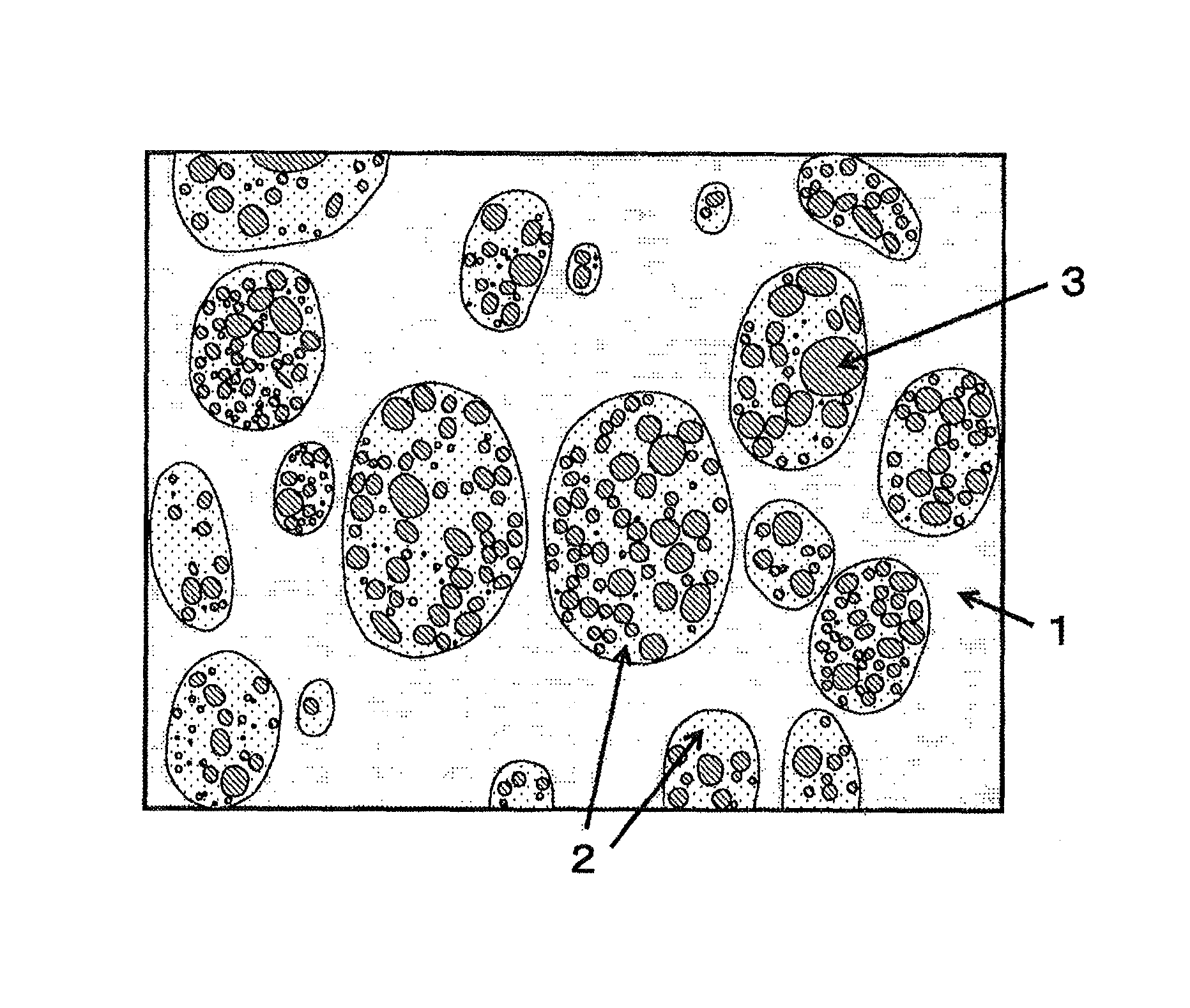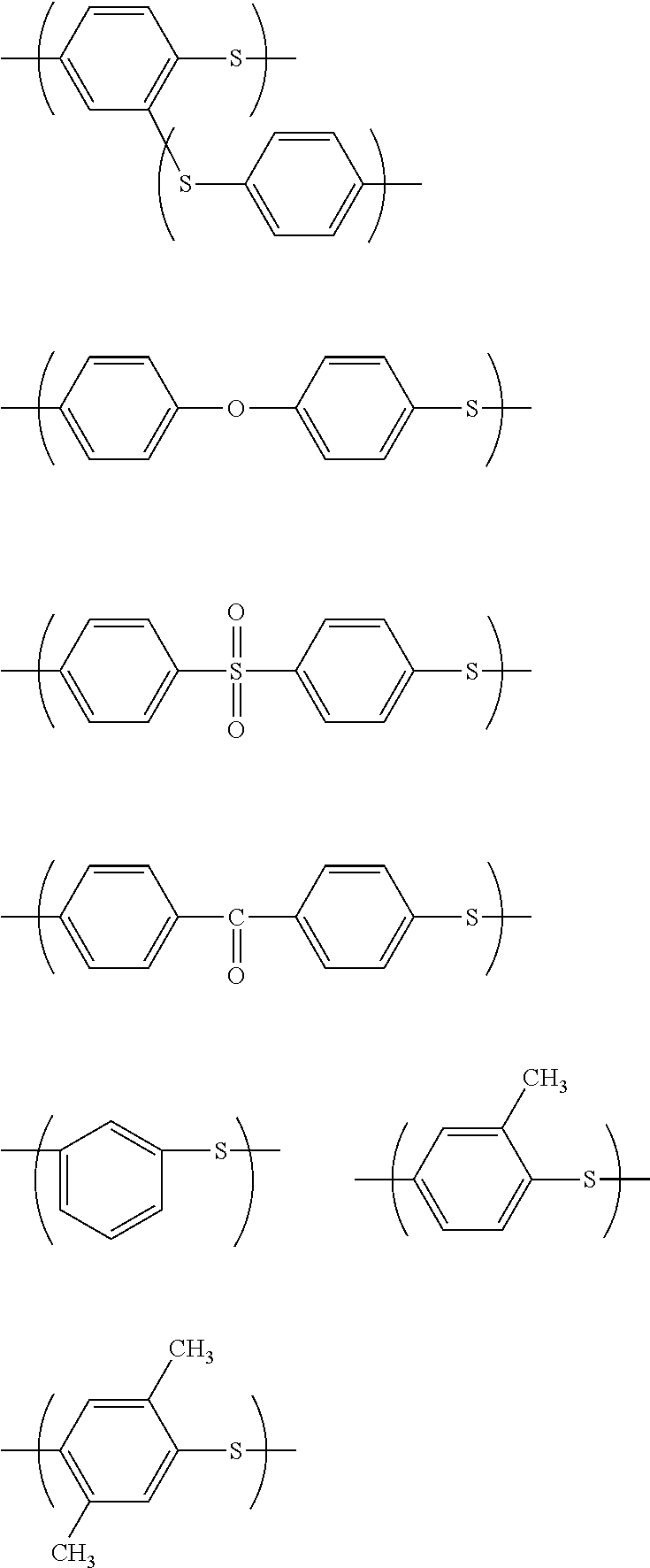Polyphenylene sulfide resin composition, production method of the same and molded product
a technology a manufacturing method, which is applied in the field of polyphenylene sulfide resin composition, a manufacturing method of the same and a molded product, can solve the problems of poor interfacial bond strength between the alloy of fluororesin and another resin at the interface, difficulty in providing sufficient mechanical properties, and composition ratio of fluororesins that do not provide good compatibility, so as to prevent the intrinsic properties of the pp resin
- Summary
- Abstract
- Description
- Claims
- Application Information
AI Technical Summary
Benefits of technology
Problems solved by technology
Method used
Image
Examples
examples
[0132]The following more specifically describes embodiments of the invention with reference to Examples and Comparative Examples, but the invention is not limited to these Examples.
[0133]Examples and Comparative Examples used the following as (a) the PPS resin, (b) the tetrafluoroethylene / hexafluoropropylene copolymer, the ethylene / tetrafluoroethylene copolymer and the tetrafluoroethylene / perfluoro(alkyl vinyl ether) copolymer and (c) the silane coupling compound.
[(a) PPS Resin (a-1)]
[0134]In a 70-liter autoclave equipped with an agitator and a bottom plugged valve, 8.267 kg (70.00 mol) of 47.5% sodium hydrosulfide, 2.957 kg (70.97 mol) of 96% sodium hydroxide, 11.434 kg (115.50 mol) of N-methyl-2-pyrrolidone (NMP), 2.583 kg (31.50 mol) of sodium acetate and 10.500 kg of ion exchange water were mixed and were gradually heated to 245° C. over about 3 hours at ordinary pressure under nitrogen stream. After distilling out 14.780 kg of water and 0.28 kg of NMP, the process stopped heati...
example 1
[0156]After 100 parts by weight of the PPS resin (a-1) and 100 parts by weight of the fluororesin (b-1) were dry-blended, the mixture was placed in a twin-screw extruder TEX 30α manufactured by the Japan Steel Works, LTD. (L / D=45, three kneading sections, ratio of stirrer screw with cutouts equal to 10% of L / D). The melt kneading conditions were temperature of 320° C. and peripheral velocity of 28 m / minute. This kneading method is specified as method A (Table 1). After pelletization with a strand cutter, the pellets were dried with hot air at 120° C. for 8 hours and were subjected to injection molding. The evaluation results of the dispersion state, the tensile strength, the tensile strength after heat treatment, the strength retention after heat treatment, the tensile elongation at break after heat treatment, the breakdown voltage and the relative permittivity are shown in Table 1.
examples 2 to 7
[0157]PPS resin compositions were prepared by the same method as that of Example 1, except the composition ratios of the PPS resin (a-1, a-2), the fluororesin (b-1 to b-4) and the silane coupling compound (c-1) shown in Table 1 and were evaluated for physical properties by the same method as that of Example 1. The results of evaluation are shown in Table 1.
PUM
| Property | Measurement | Unit |
|---|---|---|
| number-average dispersion particle size | aaaaa | aaaaa |
| particle size | aaaaa | aaaaa |
| number-average dispersion particle size | aaaaa | aaaaa |
Abstract
Description
Claims
Application Information
 Login to View More
Login to View More - R&D
- Intellectual Property
- Life Sciences
- Materials
- Tech Scout
- Unparalleled Data Quality
- Higher Quality Content
- 60% Fewer Hallucinations
Browse by: Latest US Patents, China's latest patents, Technical Efficacy Thesaurus, Application Domain, Technology Topic, Popular Technical Reports.
© 2025 PatSnap. All rights reserved.Legal|Privacy policy|Modern Slavery Act Transparency Statement|Sitemap|About US| Contact US: help@patsnap.com



